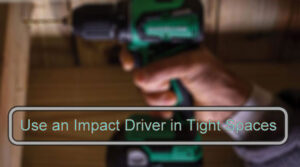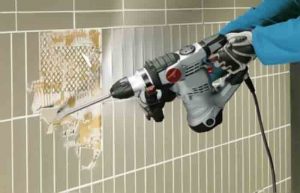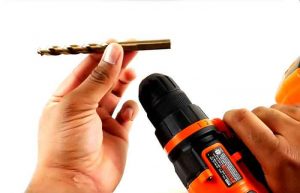A right angle drill is a type of power drill that has a 90-degree angled head. This angled head allows the drill to reach tight spaces where a regular drill cannot fit. The right angle drill is often used in construction and woodworking applications where precision and accessibility are important. It is also commonly used in automotive and aircraft maintenance, where there is limited space to work with. The right angle drill can be either corded or cordless and typically comes with a range of different attachments and accessories to suit various drilling needs.
Types of right angle drills
A right angle drill is a power tool used for drilling in tight spaces or corners where a regular drill cannot reach. There are several types of right angle drills available in the market, including:
- Corded right angle drills – These drills are powered by electricity and come with a power cord that needs to be plugged into a power outlet. They are typically more powerful than cordless right angle drills and can handle tougher drilling tasks.
- Cordless right angle drills – These drills are powered by rechargeable batteries and offer more portability and convenience compared to corded drills. They are ideal for smaller drilling tasks and are suitable for use in areas where access to a power outlet is limited.
- Pneumatic right angle drills – These drills are powered by compressed air and are typically used in industrial settings. They are powerful and can handle heavy-duty drilling tasks.
- Angle attachments for drills – These are attachments that can be added to a regular drill to convert it into a right angle drill. They are less expensive than dedicated right angle drills but may not be as powerful.
- Magnetic right angle drills – These drills use magnets to hold them in place while drilling. They are ideal for drilling in metal surfaces and can be used in both horizontal and vertical positions.
When choosing a right angle drill, it’s important to consider factors such as the intended use, the power source, and the type of material to be drilled.
Some Key Features And Components of Right Angle Drills
Here are some key features and components of right angle drills:
- Chuck: The chuck is the part of the drill that holds the drill bit or screwdriver. Right angle drills typically have a keyless chuck, which allows for easy and quick bit changes.
- Head: The head of the right angle drill is angled at 90 degrees to the body of the drill, which allows it to fit into tight spaces and corners. The head is usually adjustable, which allows for drilling at different angles.
- Trigger switch: The trigger switch is the on/off switch that controls the drill’s motor. It is typically located near the handle of the right angle drill, allowing for easy operation with one hand.
- Speed control: Many right angle drills come with variable speed control, which allows you to adjust the speed of the drill to suit different materials or tasks.
- Handle: The handle of a right angle drill is typically designed for comfort and ease of use, with a rubberized grip that provides better control and reduces hand fatigue during use.
- Power source: Right angle drills are available in corded, cordless, and pneumatic versions. Corded right angle drills are powered by electricity, while cordless right angle drills are powered by rechargeable batteries. Pneumatic right angle drills are powered by compressed air.
- Size and weight: Right angle drills come in different sizes and weights, with some models being more compact and lightweight than others. The size and weight of the drill can affect its ease of use, especially in tight spaces.
- Accessories: Some right angle drills come with accessories such as drill bits, screwdriver bits, and carrying cases. Other accessories may be available separately, such as right angle drill attachments for use with a regular drill.
By considering these features and components, you can choose the right right angle drill for your needs and tasks.
Importance of using right angle drills
Here are some highlighting the importance of using right angle drills:
- Access tight spaces: Right angle drills are designed to reach into tight spaces and corners where a regular drill cannot reach, making them essential for drilling in confined spaces.
- Save time and effort: Using a right angle drill can save time and effort by reducing the need for manual labor or the use of hand tools to drill in tight spaces.
- Increase productivity: With the ability to drill in tight spaces, right angle drills can increase productivity and efficiency in both DIY and professional settings.
- Versatile: Right angle drills are available in various types, such as corded, cordless, and pneumatic, making them versatile and suitable for a range of drilling tasks.
- Multiple materials: Right angle drills can drill through multiple materials, including wood, metal, plastic, and concrete, making them a useful tool for different industries.
- Precise drilling: Right angle drills offer precise drilling with their adjustable heads and variable speed settings, allowing for accuracy in drilling holes and driving screws.
- Better control: With a right angle drill, you can have better control over the drill bit or screwdriver, making it easier to avoid damaging the work surface or surrounding materials.
- Enhanced safety: Using a right angle drill can enhance safety by reducing the need to contort the body or twist the arm to reach tight spaces, which can cause discomfort or injury.
How Do Right Angle Drills Differ From Other Types of Drills
Here is a table that summarizes how right angle drills differ from other types of drills:
| Type of Drill | Key Features | How it Differs from Right Angle Drills |
|---|---|---|
| Standard Drill | Straight head, parallel to the body of the drill. | Can’t reach tight spaces and corners. |
| Hammer Drill | Has a hammering action for drilling through tough materials such as concrete and masonry. | May not have a right angle head, limiting its use in tight spaces. |
| Impact Drill/Driver | Uses concussive force to drive screws or bolts, with less rotational force. | Typically has a straight head, which limits its use in tight spaces. |
| Cordless Drill | Powered by rechargeable batteries, allowing for greater mobility. | May not have a right angle head, limiting its use in tight spaces. |
| Pneumatic Drill | Powered by compressed air, often used in industrial settings. | May have a right angle head, but typically heavier and less portable than other types of drills. |
As shown in the table, right angle drills are unique in their ability to reach tight spaces and corners, which makes them ideal for use in a variety of situations where other types of drills may not be suitable. Additionally, right angle drills often have adjustable heads, variable speed control, and comfortable handles, which make them easier and more comfortable to use in confined spaces.
Advantages of Using A Right Angle Drill
Here are ten advantages of using a right angle drill:
- Access tight spaces: The right angle drill’s compact design and angled head make it easier to access tight spaces that would be impossible to reach with a regular drill.
- Increased versatility: With a variety of drill bits and attachments, the right angle drill can perform a wide range of tasks, including drilling, screwing, and sanding.
- Better control: The right angle drill’s design provides better control and precision when working in tight spaces, making it an ideal tool for intricate or delicate work.
- Reduced fatigue: The right angle drill’s ergonomic design reduces strain and fatigue on the operator’s wrist and hand.
- Increased productivity: With the right angle drill’s ability to access tight spaces, users can work faster and more efficiently, resulting in increased productivity.
- Better balance: The right angle drill’s design provides better balance, making it easier to control and reduce the risk of the drill slipping.
- Improved safety: The right angle drill’s design reduces the risk of accidents and injuries, especially when working in tight spaces.
- Space-saving: The compact design of the right angle drill saves space in the tool kit, making it an ideal tool for those who work in small or confined spaces.
- Durable: Right angle drills are typically built to withstand tough working conditions and last for years, making them a reliable and long-lasting tool.
- Cordless option: Many right angle drills come in cordless versions, providing greater freedom and mobility, and eliminating the need to search for power outlets.
Disadvantages of Using A Right Angle Drill
- While the right angle drill offers many advantages, there are also a few disadvantages to consider:
- Reduced power: Due to their compact size, right angle drills typically have lower power output compared to regular drills, which can affect their drilling speed and torque.
- Limited bit size: Right angle drills are limited in the size of drill bits they can use, which can be a disadvantage when working on larger projects.
- Higher cost: Right angle drills tend to be more expensive than regular drills, due to their specialized design and the materials used in their construction.
- Increased complexity: The right angle drill’s design can make it more complex to use and maintain, with more moving parts and potential points of failure.
- Less ergonomic: While the right angle drill’s design can reduce strain on the wrist and hand, the angle can make it more difficult to hold and control, which can be uncomfortable during extended use.
- Reduced visibility: The right angle drill’s angled head can obstruct the user’s view of the work surface, making it harder to maintain precision and accuracy.
- More difficult to access certain angles: While the right angle drill can access tight spaces, there may be certain angles or positions that are still difficult to reach.
- It’s important to weigh both the advantages and disadvantages of using a right angle drill before deciding if it’s the right tool for your project.
Final Words
The right angle drill is a versatile tool that offers several advantages for professionals and DIY enthusiasts who work in tight spaces or require precision drilling. Its compact size and angled head allow it to reach areas that regular drills cannot, providing greater productivity, control, and safety. However, it’s important to consider the disadvantages of reduced power, higher cost, and reduced visibility before making a decision to purchase a right angle drill.
Frequently Asked Questions
What types of projects are right angle drills best for?
Right angle drills are best for projects that require drilling or fastening in tight spaces or hard-to-reach areas.
What are the differences between corded and cordless right angle drills?
Corded right angle drills have a continuous power source, while cordless right angle drills rely on rechargeable batteries for power. Cordless drills offer greater mobility, but have limited battery life and may require frequent recharging.
How do I select the right size drill bit for my right angle drill?
The size of the drill bit you can use with your right angle drill will depend on the chuck size of your drill. Be sure to check the chuck size and select the appropriate size drill bit for your project.
Can I use a right angle drill for sanding or polishing?
Yes, you can use a right angle drill for sanding or polishing, but you will need to use an appropriate attachment, such as a sanding pad or polishing disc.
Can I use a right angle drill with a hole saw?
Yes, you can use a right angle drill with a hole saw attachment. However, be sure to choose the appropriate size and type of hole saw for your project.
Are right angle drills more expensive than regular drills?
Yes, right angle drills are generally more expensive than regular drills due to their specialized design and construction. However, the added functionality and versatility may be worth the investment for professionals or frequent DIYers.




